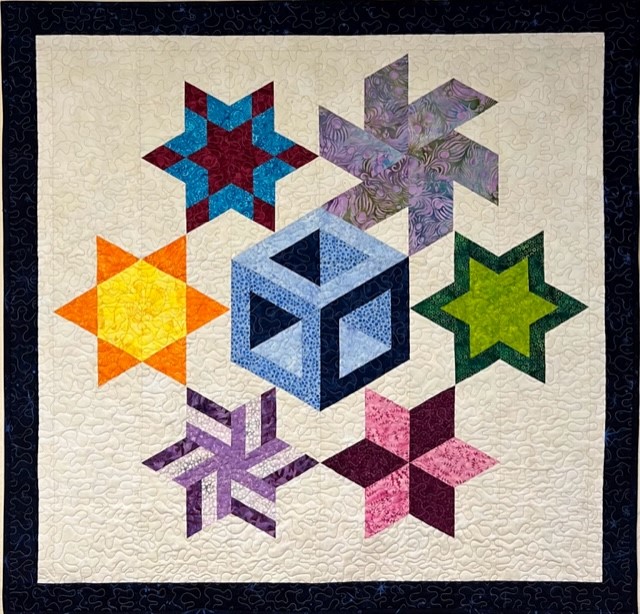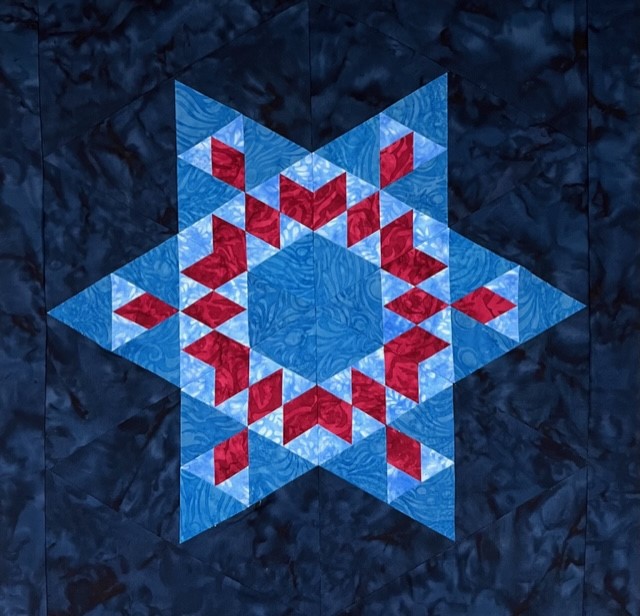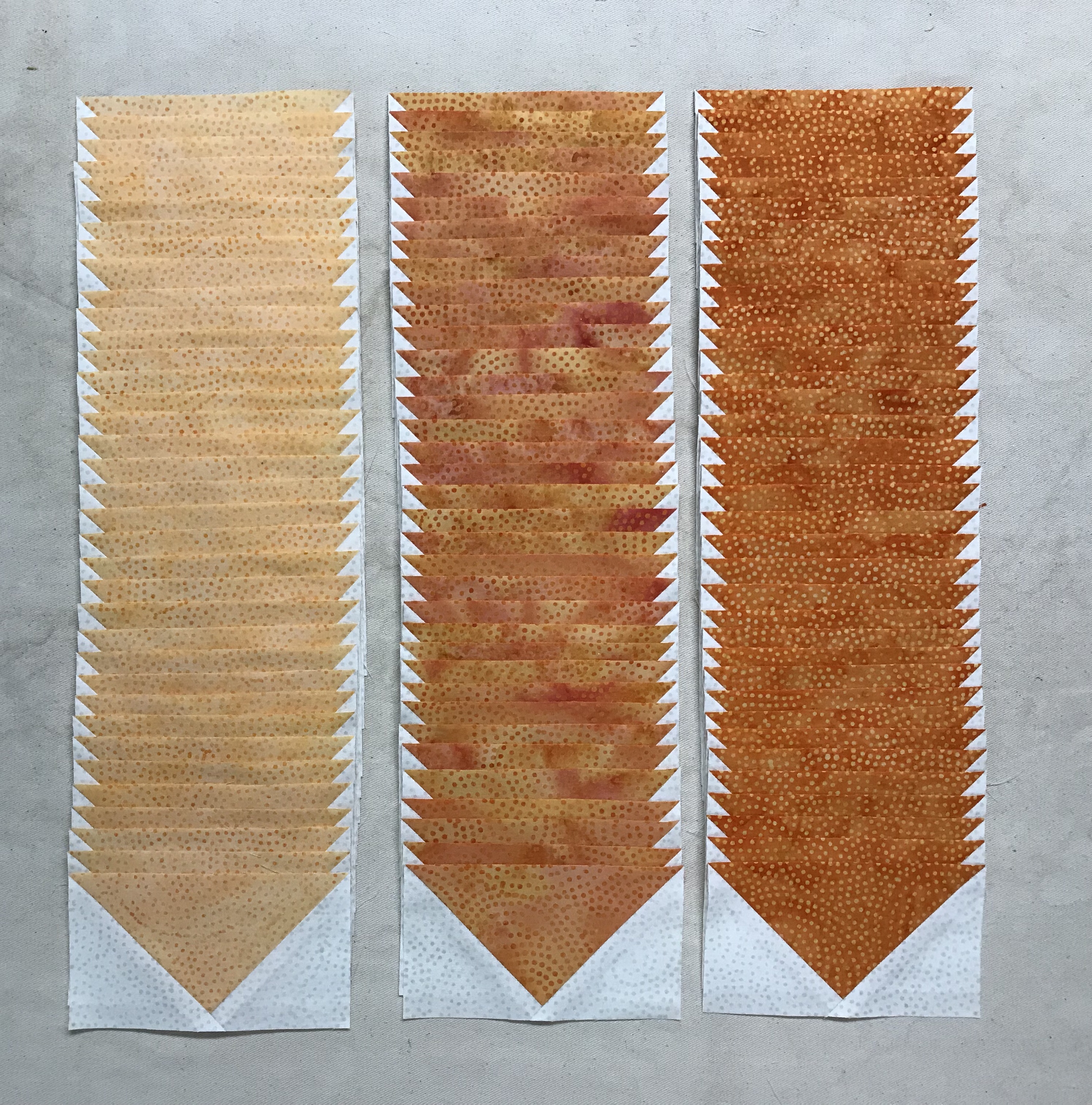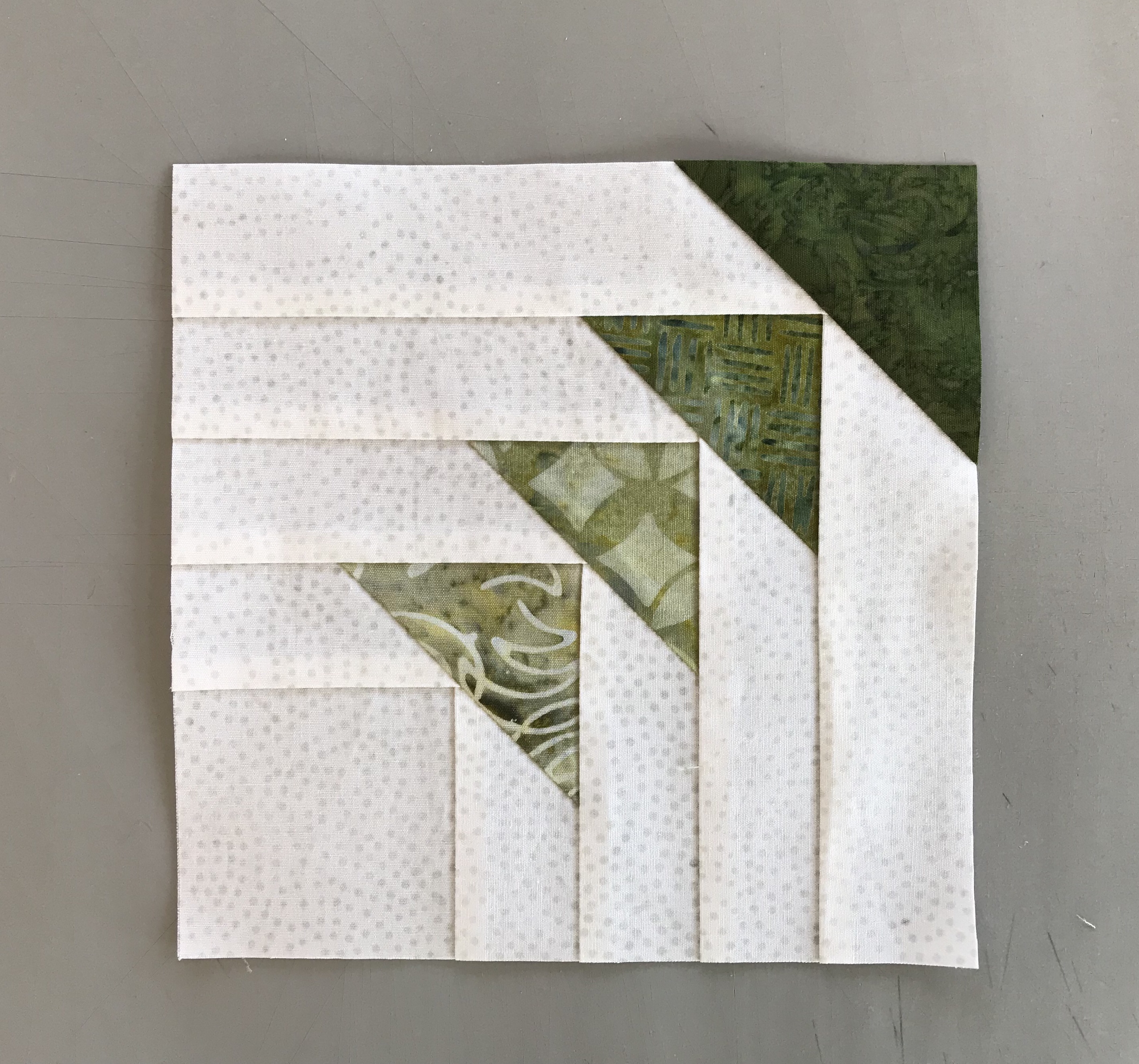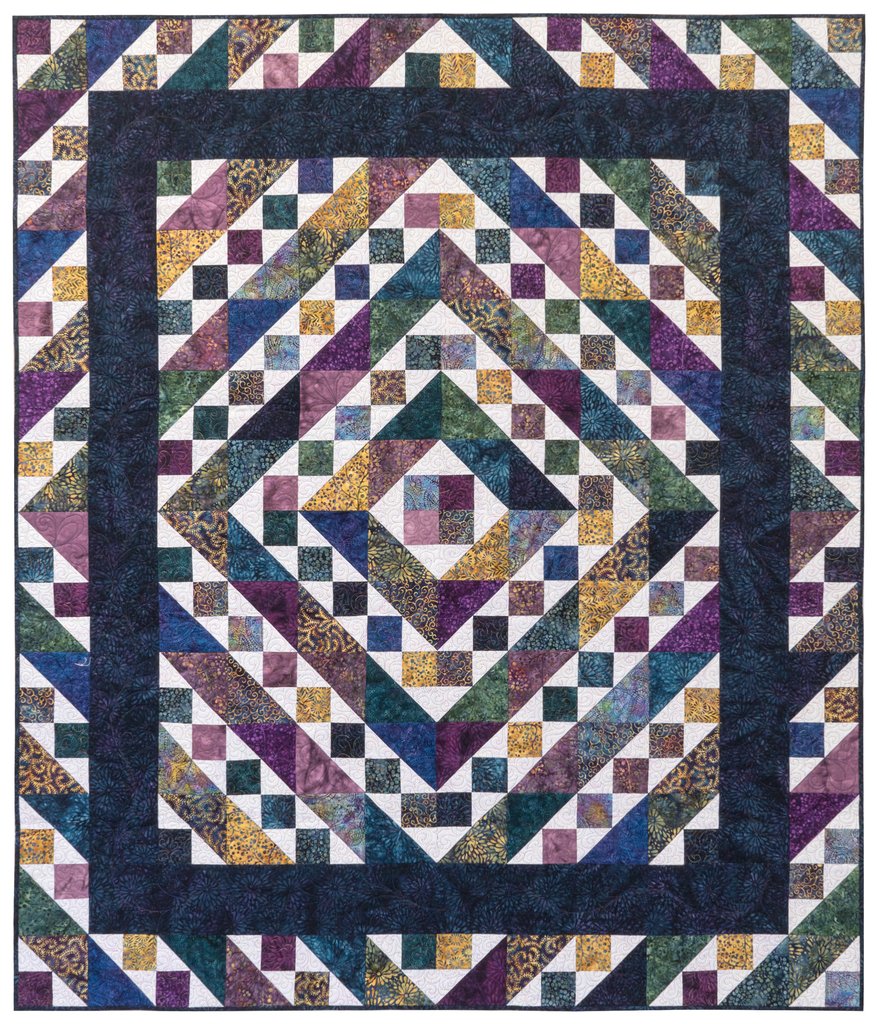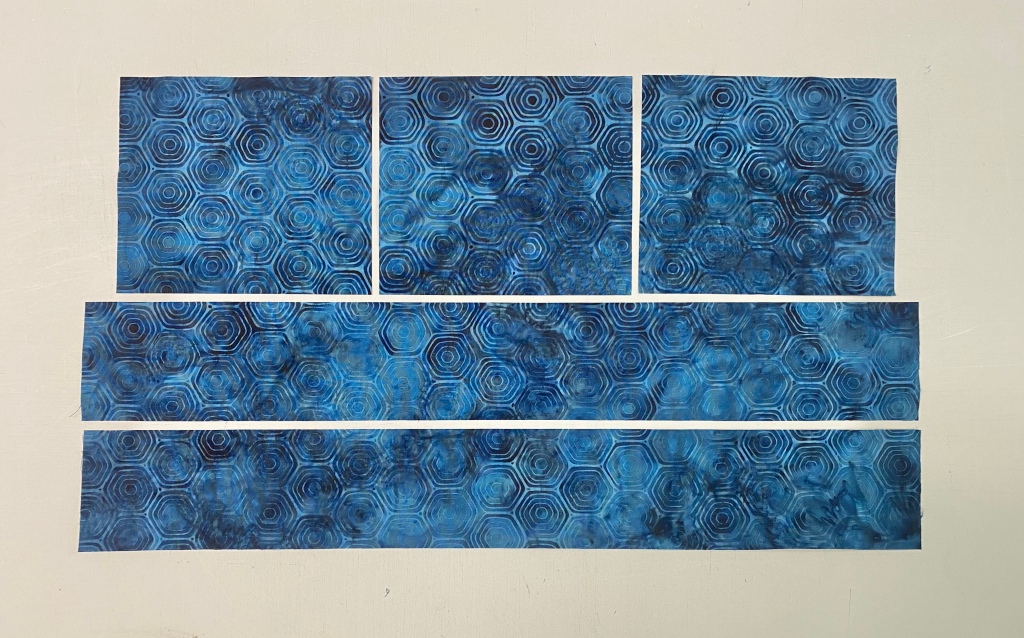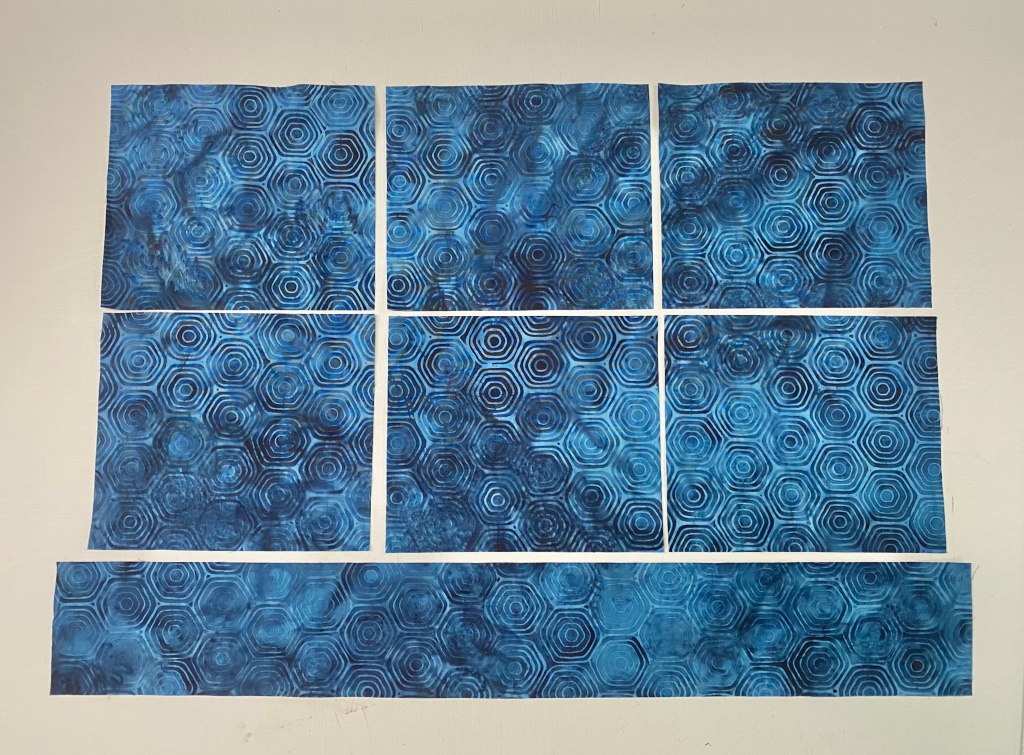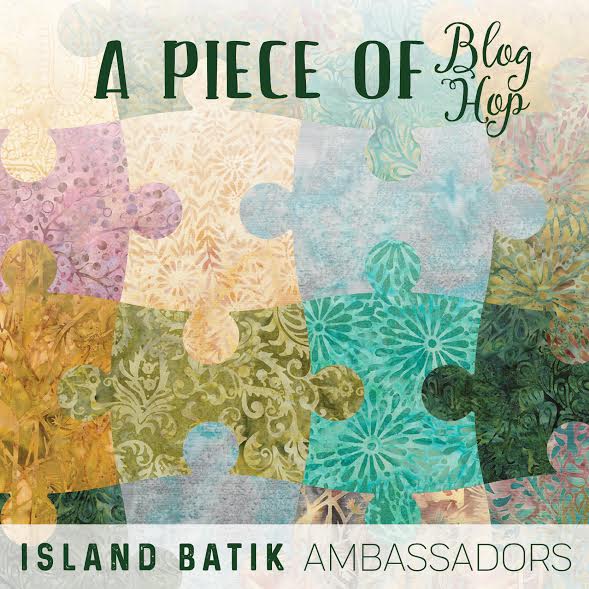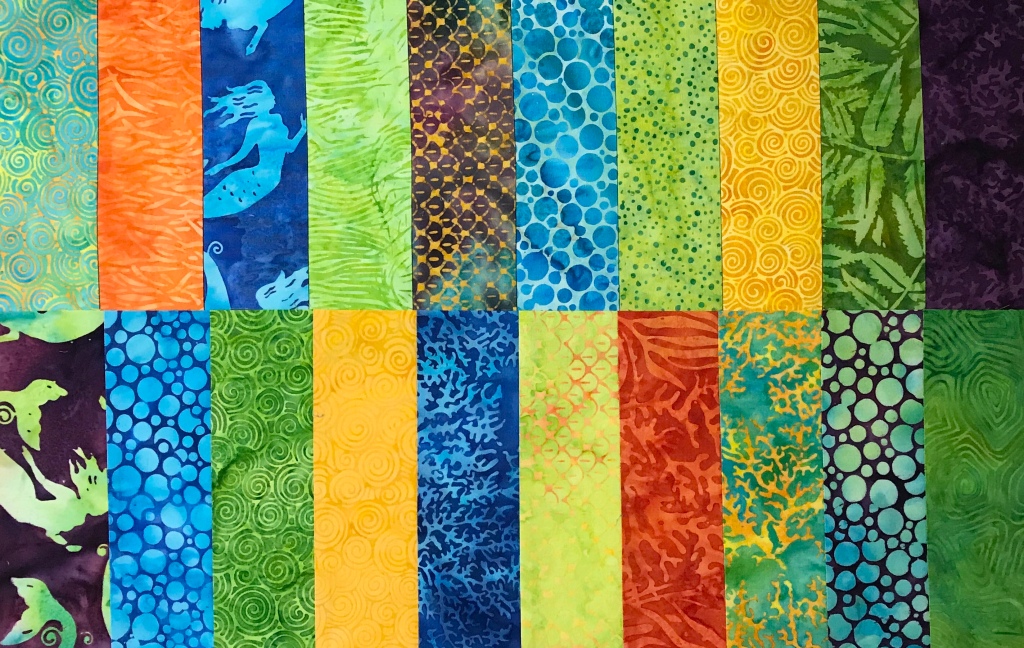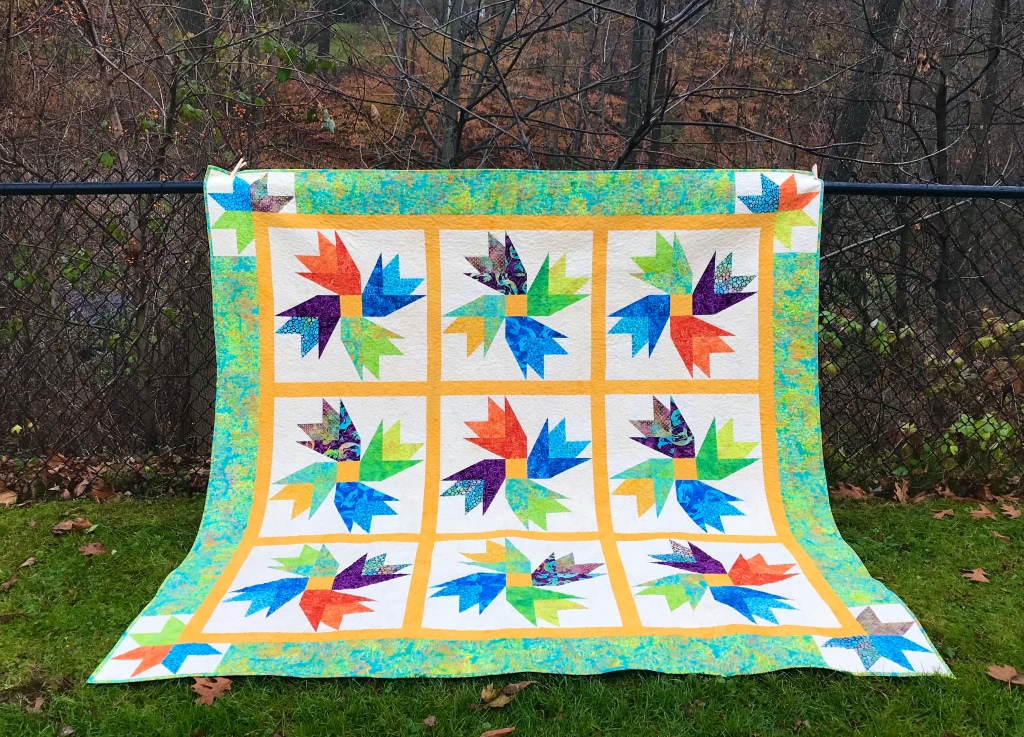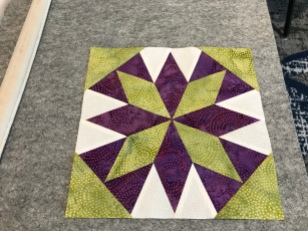I fell in love with the colors in this panel by Carol Cavalaris and QT Fabrics.
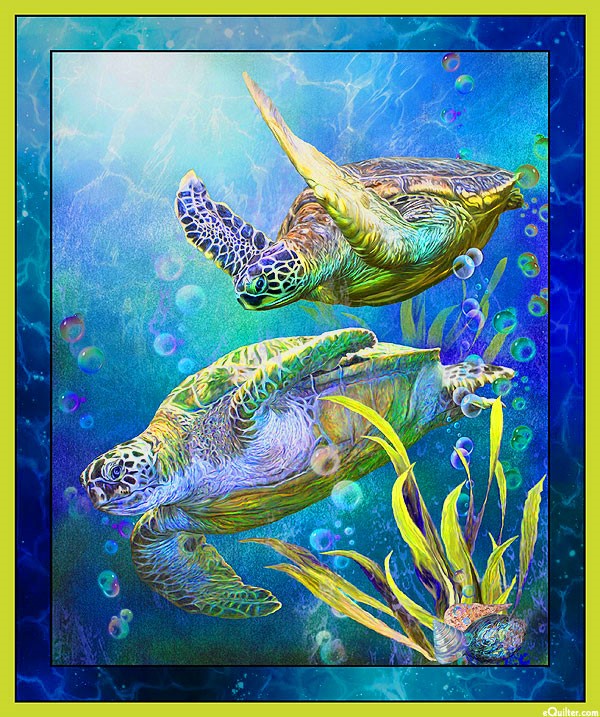
I did not want to include the panel borders in my One Block Wonder (OBW), so I measured the inside as 30.75″ x 36.75″. I cut my strips 3.25″ to yield 5″ finished hexies. As there was little design in corners, I aligned around the turtles and plants in 12 different places. I cut my strips on the shorter 30″ side as opposed to the length of the panel. I had 165 hexies to design with.


I started designing on the bottom right of the panel going across the bottom and up the right side. I added a 15″ Hollow cube that had 3 – 5″ hollow cubes inside it. My cubes are made using Deb Tucker’s Star 60 ruler and the Hollow Cube 60 Technique Sheet.

I added half hexegons made using the Star 60 ruler and a darker Island Batik fabric to fill in around the hexies from the panel.

My rows are numbered and ready to be stitched together into sections .

The photo above show how the 15″ cube is incorporated into the 5″ hexies. I don’t trim the panel till I’m ready to stitch the sides to it.

All four sections are stitched together and ready to add to the panel.

I add the bottom section to the panel first. I did not want to trim the points, so I took out few stitches in the valley’s and pressed under about 1/4″. After the bottom is stitched to the panel, I add the right side and stitch, ending about 8″ from the top of the of the panel. This shows me where to attached the top section to the panel. Once the top is attached I can finish the seam of the right section to the panel. Now the left side can be easily added.

Once all the sections are attached to the panel, I can begin to tweak and soften the edges around the panel.

I made 3″ finished Hollow Cube 60’s to applique on the left side and on the top to hide where the panel border was showing. I use Island Batik fabrics to create my Hollow Cube 60’s. Heading to the Turtle Boudoir is now ready to be quiulted. This quilt won a 4th Place Ribbon at the New York State Fair, 2023.
@studio180design @islandbatik @star60 @Hollowcube 60


